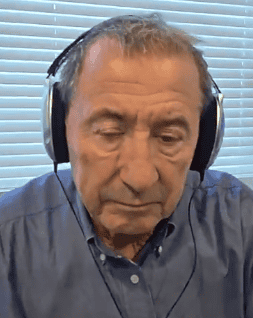
Tomorrow, September 4, Millville Artist Maryann Cannon Will Explain Images on Richard Somers Mural She Painted In Somers Point
801 Shore Road at 4pm. The public is invited to fundraising buffet immediately afterwards at Gregory’s Restaurant, 900 Shore Road. $35pp, $60 two. (In case of rain, go directly to Gregory’s at 4pm.)
Events have been held in Somers Point to remember Richard Somers every September since 2004, the 200th year since his death.
Renewed interest in Richard Somers caused the Somers Point Historical Society and local government to erect a statue in his memory at 801 Shore Road in Somers Point in 2013. In 2015, they, together with the Somers Point Arts Commission engaged Millville artist Maryann Cannon to paint a mural telling the Richard Somers story on the wall of the adjoining library.
During each of the past fifteen years, we never heard the same story twice. Each year new research and personalities added fresh details to the story and gave us new and interesting insights into every aspect of American life. This year is no exception.
Tomorrow (Wednesday, September 4 at 4pm) Millville artist Maryann Cannon will publicly explain the images on Richard Somers mural she completed four years ago. This will add to these key facts brought up during September events in Somers Point during the past fifteen years.

- Richard Somers, like most Americans of his time completed school at age 15, and mastered a trade by age 17. As a teenager, Somers was the skipper of sailing ships that carried merchandise between Philadelphia and New York.
- When America’s War for Independence against England was over, we were so committed to peace, that we completely disbanded our navy, and cut our army down to less than a thousand men. We depended completely on good will, negotiation and diplomacy to protect our people.
- As soon as America won independence in 1783, our ships in the Mediterranean and Atlantic were attacked by “pirates” from the “Barbary” kingdoms of North Africa. They seized our ships and everything that was in them. They held passengers and crew for ransom, or sold them into slavery.
- When American Ambassadors John Adams and Thomas Jefferson asked England and France to help us defend our ships, they were advised to pay bribes or tribute in advance to the Barbary kingdoms. That is what England and France did.
- In 1786, John Adams and Thomas Jefferson met with the Ambassador from Tripoli (now Libya), one of the Barbary Kingdoms. They said America was a new nation thousands of miles away that had done no harm to the Barbary kingdoms of North Africa. They asked why we were being attacked. This is what they were told: “It was written in their Koran that all nations which had not acknowledged the Prophet were sinners, whom it was the right and duty of the faithful to plunder and enslave; and that every Mussulman who was slain in this warfare was sure to go to paradise”.
- This is why Thomas Jefferson bought a Koran for his library. Jefferson and Adams both urged Congress to build a navy to protect our ships. That request ws rejected. For the next 12 years, America paid roughly 10% of our federal budget to the Barbary kingdoms as bribes, ransom, and tribute.
- The Barbary Kingdoms used much of this money to buy faster ships and more modern weapons. They soon demanded even more money. Then French pirates began to attack American ships in the Caribbean and the French government demanded bribes to stop them!
- In 1798, Americans had enough. They shouted “Millions for defense, not one cent for tribute” We built a new navy. Richard Somers was one of the first to join at age 20.
- Although Richard Somers reported to Annapolis to become a naval officer, all training took place at sea on warships where students were called “midshipman”. He and the other young officers got on-the-job education fighting French pirates in the Caribbean.
- The Barbary “pirates” were not legally pirates. Pirates were outlaws who were tried and executed when captured. The Barbary “pirates” who attacked Americans were “privateers” or “corsairs” who had a license to do what they did. They were hired by nations who were legally at war with America. When captured, they were held as prisoners-of-war under international law.
- In 1801, Thomas Jefferson became President, and Tripoli demanded additional bribes. Jefferson sent our new American navy across the Atlantic to fight them. Richard Somers commanded The Nautilus, one of our new warships, at age 23.
 Original monument to Richard Somers near New York Ave. School near Bike Path in Somers Point, NJ.
Original monument to Richard Somers near New York Ave. School near Bike Path in Somers Point, NJ.- “Richard Somers. . . perished in the 25th year of his age in the Ketch Intrepid in the memorable attempt to destroy the Turkish Flotilla in the Harbour of Tripoli on the night of the 4th of Sep. 1804.”
14. Although most historians today say America fought four “Barbary” kingdoms in North Africa, the original Richard Somers monument by the New York Avenue School in Somers Point states that our enemy was “The Turkish flotilla”. At the time, the Turkish Sultan controlled the large Ottoman Empire in Europe, North Africa and the Middle East and was the Caliph, or religious leader of the entire Islamic world. That is depicted on the mural.
15. At first, Europeans leaders laughed at America for sending a small force of young, inexperienced sailors against feared, veteran sea-fighters who had defied and defeated the strongest navies of Europe.
16. However, those young Americans soon defeated the Barbary “pirates” in battle after battle. England’s Admiral Lord Nelson called one American attack “the most bold and daring act of the age.” Pope Pius VII said the United States “had done more for the cause of Christianity than the most powerful nations of Christendom for ages.” For years, military historian Chipp Reid, author of Intrepid Sailors, spoke at our September events to explain how these young Americans did it.
17. In the summer of 1804, Richard Somers and other American officers were afraid the politicians in Washington would bring them home before they fully defeated the enemy. They came up with a daring and risky plan to destroy the “Turkish flotilla” in Tripoli with tons of explosives packed into the “volcano ship” Intrepid. The mission failed. Richard Somers and all members of his crew were killed in the harbor of Tripoli on September 4, 1804. However, they inspired the rest of the fleet to continue the struggle. The following year, America’s first marines landed on the shores of Tripoli, and won a decisive victory.
18. The Barbary Kingdoms did far more than attack American ships. They were the center of a massive slave trade that for centuries captured and sold millions of slaves from as far north as Iceland and as far south as central Africa. Richard Somers and those young Americans took a giant step in ending that slave trade. They also raised awareness of the evils of slavery in America, and intensified efforts to free African-American slaves here in this country.
- We are a group of 150 ordinary citizens who mostly live near Atlantic City, New Jersey. We volunteer our time and money to maintain this website. We do our best to post accurate information. However, we have made mistakes. If you see any mistakes or inaccurate, misleading, outdated, or incomplete information in this or any of our posts, please let us know. We will do our best to correct the problem as soon as possible.
- Seth Grossman, Executive Director
- LibertyAndProsperity.com
- info@libertyandprosperity.com
- (609) 927-7333

